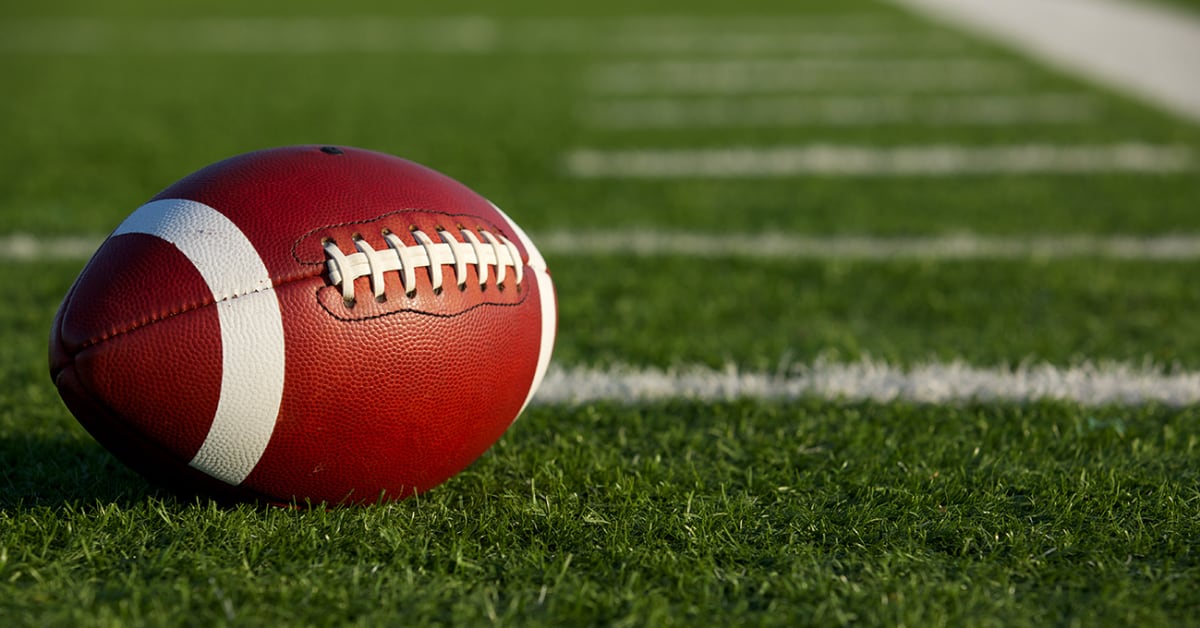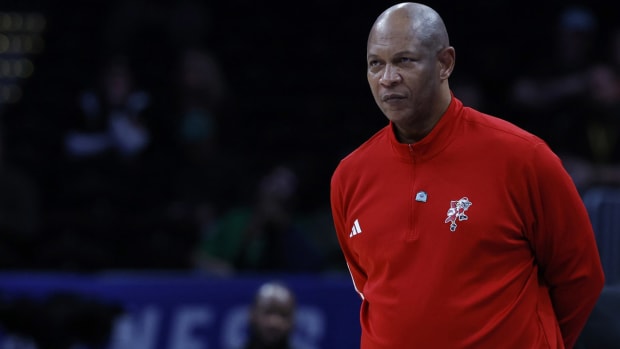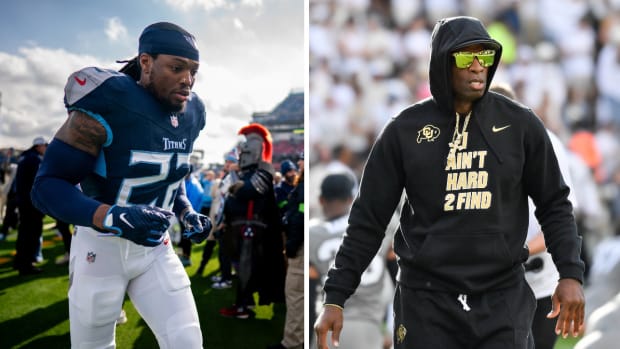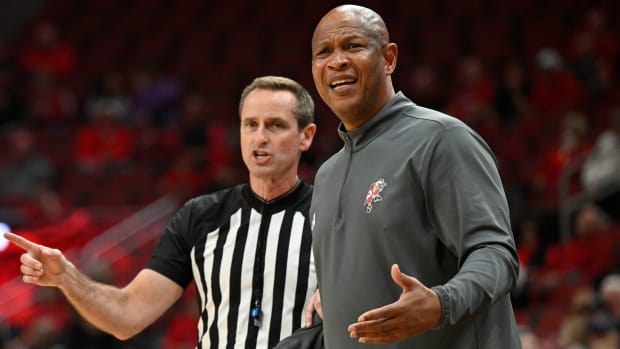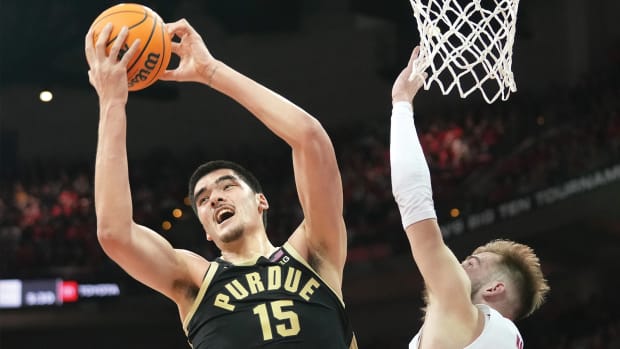College Football Brass Exploring New Formats For Signing Days and Letters of Intent
The process by which a college football player signs with a university is a labor-intensive, sometimes four-year courtship that ends on National Signing Day, either in December or February.
According to some coaches, it should end in a different way.
“It would help all of us and our high school coaches that, after Aug. 1 of their senior year, they can sign a national letter of intent any day they want with any school,” Auburn coach Hugh Freeze says.
The idea of a sign-when-you-receive-a-letter-of-intent model is not new. But the concept is gaining steam among coaches and some administrators, and was a topic of discussion at the SEC spring meetings this week on the Florida panhandle.
The NCAA Football Oversight Committee, as well as conference commissioners, are now exploring several changes to current recruiting policies, including letters of intent, the early signing period and the IAWP rule (an individual associated with a prospect). The IAWP prohibits colleges from hiring high school coaches and staff members with a direct link to recruits who sign with that school.
Among those we spoke to this week, most say they believe change to at least one or more of these is on the way.
Letter of intent and signing day
For more than a year now, momentum has built to shift the December early signing period up in the calendar or abolish it altogether.
The window falls during the third week of the month, an incredibly busy stretch in college football. Coaches are preparing for bowl games, losing or gaining players during the portal window, and juggling their own coaching staff departures or additions. Head coaching moves are also happening. And it’s only going to get busier. Starting in 2024, the College Football Playoff will expand by eight more teams. The four first-round games are slated for the same week as the signing period.
“December was hard before, but it’s getting enormously hard,” SEC commissioner Greg Sankey says. “The idea that we’re going to have our best teams in the Playoff and not engaged in recruiting, we’ve got to relieve that tension.”
So what are the solutions? Several options are bubbling to the surface, but there is something important to note: The conference commissioners control rules around signing days and the letter of intent.
Option 1: Sign whenever you want once your senior year begins.
“I think there should be a discussion about you signing whenever you want to like anything else,” Ole Miss coach Lane Kiffin says. “I think about portal guys. Once they go in, they can sign whenever they want. Why wouldn’t high school kids be able to do that, instead of waiting so long?”
LSU coach Brian Kelly agrees with Freeze: Starting Aug. 1 of a prospect’s senior year of high school, he can sign the letter of intent. Kelly and other college coaches say high school coaches are on board with the move. The recruitment out of the transfer portal has impacted the high school ranks, so this move could help improve recruiting.
“The proliferation of the players in the portal has pulled from the [high school] group,” Kelly says. “When you’re ready to go, secure your spot and sign in August so you don’t get knocked off from the portal in December or the spring.”
If a prospect can sign when he wants, it may also decrease the number of “uncommittable” scholarship offers that many schools make, offers they often don’t keep.
“If you called me and said, ‘I want your offer,’ and I don’t send the papers in 48 hours, you’d know Auburn isn’t quite as serious as I thought they were, and we’d know the same thing about who is serious about us if they don’t sign,” Freeze says.
Option 2: Move the signing day up.
The options for new dates that are being discussed—earlier in December, late November or even August or September.
Todd Berry, executive director of the American Football Coaches Association, says a large group of coaches believes a late November or early December date is more suitable. There is a downside to moving it to August or abolishing it completely, Berry says.
Will high school players begin to skip out on their senior season if they sign a scholarship before it begins?
“There is a significant number of coaches worrying about the impact on high school football,” Berry says, “but we do have a growing number that would like to do it in the summer prior to the senior year.”
Sankey offers moving back the signing date.
“We don’t have a position on a specific early-signing date—as early as August, as I know of—but we have a desire to not let the early-signing date remain,” Sankey says of his league. “One of the considerations is back in January, so you get clear of things and understand where you are in the transfer rule and then could sign. Others could make reasons why earlier could be better.”
IAWP rule
The IAWP was implemented in 2017 to prevent colleges from gaming the recruiting system by hiring a coach or family member of a player for which it is recruiting.
Coaches were in support of the change. That is no longer the case. Name, image and likeness (NIL) rules have changed the game, says Kelly. Coaches are using NIL in recruiting, not hiring people with a relationship with a recruit.
“With name, image and likeness … those are the true inducements. It’s not because you hired somebody,” he says.
The IAWP is sometimes preventing universities from hiring high school coaches due to their relationships with a recruit.
“I think it’s a terrible rule,” Missouri coach Eli Drinkwitz says. “I wasn’t an IAWP coach, but I was a high school coach who had the opportunity to coach in college sports.”
Berry says the IAWP is a difficult concept to enforce. Over the past year, the NCAA has abolished several rules that are unenforceable. Why not scratch this one?
“It’s ridiculous the mechanisms you have to go through to hire somebody right now,” Berry says. “I think IAWP is very burdensome and semihard to control. There’s an awful lot of, ‘What is a relationship with a student-athlete?’”
The Football Oversight Committee is expected to continue studying all of these concepts with potential recommendations to the NCAA Division I Council or commissioners for changes in the coming months.
